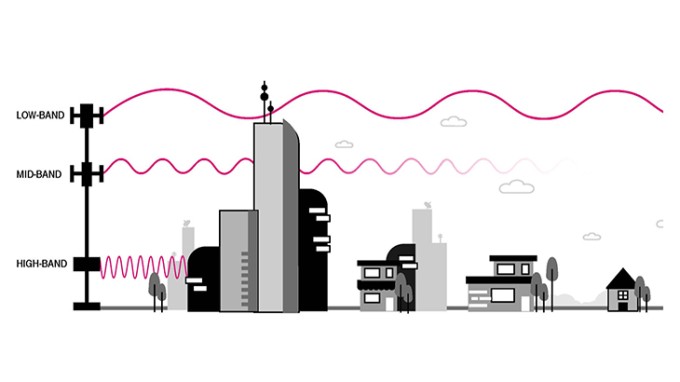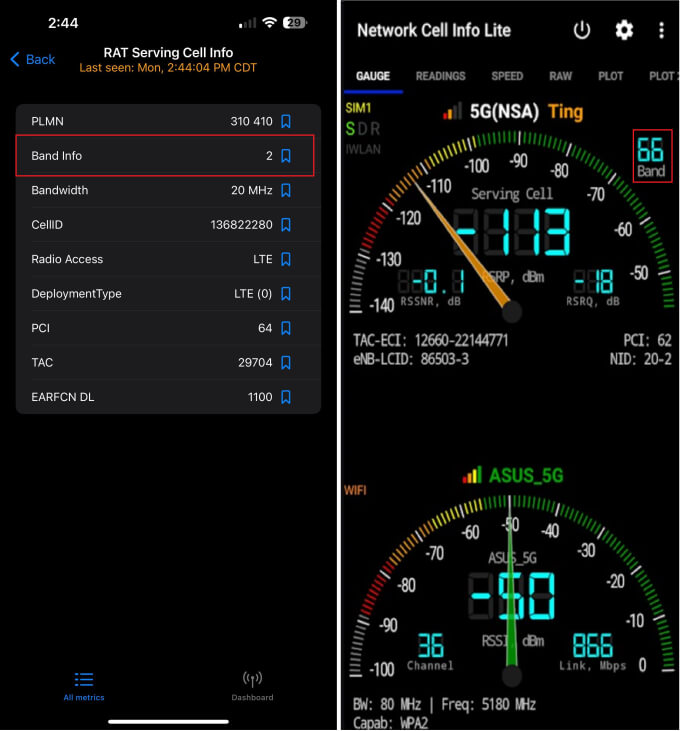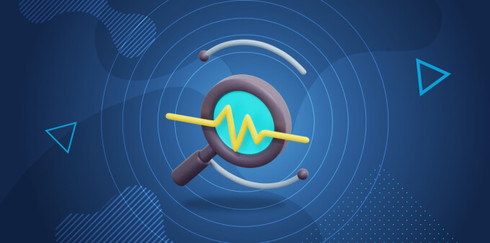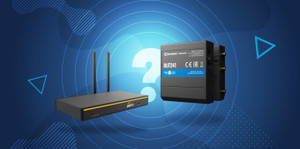Cellular Frequency Bands: A Simple Breakdown
Mobile devices rely on cellular frequencies to connect to mobile networks. Having a general understanding of cellular frequency bands can help you make informed decisions about switching carriers or purchasing devices from third parties.
In this blog, we will delve into what cellular frequencies are, explore which frequencies each carrier uses, and more – all explained in simple terms.
Take advantage of our system design and installation services. Learn more or call us for a free consultation: 1-800-969-8189.
What Are Cell Phone Frequency Bands?
Cellular devices use over-the-air cellular frequencies to wirelessly transmit data over a mobile network. The frequencies allocated by the FCC (Federal Communications Commission) and NTIA (National Telecommunications and Information Administration) for mobile use range from 600 MHz to 53 GHz on the RF spectrum.

A range of cellular frequencies is known as a cell phone frequency band. There are various cell phone frequency bands. Grouping frequencies together helps with the allocation and identification of the RF spectrum.
How Do Cell Phone Frequency Bands Work?
Cellular providers use various frequency bands to deliver coverage in multiple areas. Many cellular bands are broken up into channels or blocks, allowing multiple carriers to operate on the same band without interfering with each other. Allocation is based on leases between cellular providers and the FCC.
You can think of frequency bands like highways that carry voice and data signals to and from devices. Different cell phone carriers have their own lanes, giving them their own space on the spectrum. When you make a call or use the internet on your phone, your device sends and receives information using those designated lanes.
Performance will vary across frequency bands. Higher frequencies support faster speeds, lower latency, and greater capacity. Though these frequencies can’t travel far. Lower frequencies aren't as fast, but they do have greater reach. The different characteristics in frequency bands allow cellular providers to cater to different mobile wireless connectivity applications.
What Frequency is 5G Cellular?
5G is the fifth generation of mobile networks. It promises faster speeds, ultra-low latency, better capacity, and increased connectivity for cellular devices as well as the Internet of Things (IoT). To accomplish this, 5G was deployed on three different sections of the spectrum thanks to 5G New Radio technology.
Low-Band 5G
Low-Band 5G refers to 5G frequencies ranging from 600 MHz to 1 GHz. Being on the lower end of the spectrum, these 5G frequencies have the greatest reach. Thus, this spectrum of 5G is often described as the blanket layer for 5G coverage. It’s used to provide nationwide coverage, bringing 5G connectivity to those in rural and suburban areas. When connected to Low-Band 5G frequencies, performance is comparable to or slightly better at times than 4G.
Mid-Band 5G
Mid-Band 5G transmits signals on frequencies between 1 GHz and 6 GHz. C-band can be found in this range. It’s located between 3.7 GHz and 3.98 GHz.
This flavor of 5G offers a well-rounded combination of coverage, capacity, and speed. In other words, it’s the “Goldilocks” band. Performance is significantly better than Low-Band 5G but does not compare to High-Band 5G.
Main deployment areas for Mid-Band 5G consist of suburban and urban communities where mobile connectivity demand is considerably high.
High-Band 5G
High-Band 5G operates on the mmWave (millimeter wave) spectrum at 24 GHz to 53 GHz. These 5G frequencies are much higher than Low- and Mid-Band 5G. They offer the highest speeds, lowest latency, and greatest capacity. This is where cell phones and IoT machines will experience what 5G is all about. However, these cellular frequencies have the shortest range. Thus, their main application will be in areas where demand is high, like urban environments and busy venues.
Availability, though, is limited. To deploy, new infrastructure, like small cells, is needed. So, it will take some time for High-Band 5G to reach all planned locations.

What 5G Cellular Frequency Bands Does Each Cellular Carrier Use?
| Cellular Provider: | Low-Band 5G Frequencies: | Mid-Band 5G Frequencies: | High-Band 5G Frequencies: |
| AT&T 5G | 850 MHz: Band n5 | 1900 MHz: Band n2 3.4 GHz: Band n77 3.7 GHz: Band n77 |
24 GHz: Band n258 28 GHz: Band n261 39 GHz: Band n260 |
| T-Mobile 5G | 600 MHz: Band n71 | 1900 MHz: Band n25 2.5 GHz: Band n41 |
24 GHz: Band n258 28 GHz: Band n261 39 GHz: Band n260 |
| Verizon 5G | 850 MHz: Band n5 | 1700/2100 MHz: Band n66 1900 MHz: Band n2 3.7 GHz: Band n77 |
28 GHz: Band n261 39 GHz: Band n260 |
| US Cellular 5G | 600 MHz: Band n71 | 3.4 GHz: Band n77 3.7 GHz: Band n77 |
24 GHz: Band n258 28 GHz: Band n261 39 GHz: Band n260 |
| Boost Mobile 5G | N/A | 2.5 GHz: Band n41 | N/A |
| Cricket 5G | 850 MHz: Band n5 | 3.7 GHz: Band n77 | 39 GHz: Band n260 |
| Metro by T-Mobile 5G | 600 MHz: Band n71 | N/A | 28 GHz: Band n261 39 GHz: Band n260 |
| Dish Wireless 5G | 600 MHz: Band n71 700 MHz: Band n29 800 MHz: Band n26 |
1700/2100 MHz: Band n66/n70 3.5 GHz: Band 48 |
28 GHz: Band n261 39 GHz: Band n260 47 GHz: Band n262 |
What Frequency is 4G Cellular?
4G is the fourth generation of mobile networking. Like 5G, it added much needed capacity to the network. It also improved data speeds.
While it is not the most cutting-edge technology anymore, it is still the most widely used method of mobile communication as of 2023.
4G operates on the Sub-6 frequency spectrum, meaning cellular frequencies below 6 GHz. It specifically uses the 600 MHz, 700 MHz, 850 MHz, 1900 MHz, 1700/2100 MHz, 2300 MHz, and 2500 MHz bands.
What 4G Cellular Frequency Bands Does Each Carrier Use?
| Cellular Provider: | 4G Frequencies: |
| AT&T 4G | 700 MHz: Bands 12/17/29 700 MHz: Band 14 (FirstNet) 850 MHz: Band 5 1700 MHz/2100 MHz: Bands 4/66 1900 MHz: Band 2 2300 MHz: Band 30 5.2 GHz: Band 46 |
| T-Mobile 4G | 600 MHz: Band 71 700 MHz: Band 12 850 MHz: Band 5/26 1700 MHz/2100 MHz: Bands 4/66 1900 MHz: Band 2/25 2.5 GHz: Band 41 3.5 GHz: Band 48 (In select areas) 5.2 GHz: Band 46 (In select areas) |
| Verizon 4G | 700 MHz: Band 13 850 MHz: Band 5 1700/2100 MHz: Bands 4/66 1900 MHz: Band 2 3.5 GHz: Band 48 (In select areas) 5.2 GHz: Band 46 (In select areas) |
| US Cellular 4G | 700 MHz: Band 12 850 MHz: Band 5 1700/2100: Band 4 1900: Band 2 |
| Boost Mobile 4G | 800 MHz: Band 26 1900 MHz: Band 25 2500 MHz: Band 41 |
| Cricket 4G | 700 MHz: Bands 17 1900 MHz: Band 2 1700 MHz /2100 MHz: Band 4 2300 MHz: Band 30 |
| Metro by T-Mobile 4G | 600 MHz: Band 71 700 MHz: Band 12 850 MHz: Band 5 1700/2100 MHz: Bands 4/66 1900 MHz: Band 2 |
| Dish Wireless 4G | N/A |
What Frequencies Do Cell Phones Use?
Cell phone devices are designed to support a wide range of 4G and 5G frequency bands. Supported bands will vary across device model and manufacture.
For example:
iPhone 15 5G and 4G Frequency Bands

Samsung S23 5G and 4G Frequency Bands

iPhone 12 5G and 4G Frequency Bands

Samsung S10 5G and 4G Frequency Bands

See here for the difference between TDD and FDD.
Why Do Phones Support Multiple Frequency Bands?
Cellular providers use various cellular frequency bands, which vary by area, to keep users connected. For example, the frequencies available in the countryside will be different than those in the city.
Cell phones are designed to support multiple frequency bands to ensure users can access their carriers' network anywhere within their coverage area. It also enables unlocked cell phones to work with other carriers within the US as well as internationally.
If cell phones only worked with select frequency bands, they would only work with certain carriers in certain areas, limiting coverage. Using your phone with a different carrier or an international SIM card would be increasingly difficult.
How to Check Which Frequency Bands Phones Support?
The easiest way to identify which cellular bands your device supports is by looking at your specific device’s tech specs. Google can help you find this information within seconds.
To check which cellular frequency band you are currently connected to, we recommend field test mode for iPhones and the Network Cell Infor Lite App for Androids.

Why Are Cell Phone Frequency Bands Important?
Cell phone frequency bands might seem like technical jargon, but understanding them is important, especially when:
- Activating your phone with a different carrier, or
- Buying an unlocked device to activate with your carrier.
The bands your phone supports determine if it's going to play nicely with your chosen carrier. The more bands your phone has in common with your current or future cellular provider, the better connectivity you will have.
Activating a phone that is not totally compatible with your desired provider can result in connectivity issues, such as dropping calls, failed texts, and unreliable data. In those situations, even a cell phone signal booster wouldn't be able to help improve your service.
If your cellular device and carrier are compatible, but reception in your home or vehicle is poor, a cell phone signal booster can help. See how cell phone signal boosters work for more information.
Signal Boosters is a leading provider of cell phone signal boosters for homes, offices, and vehicles. Contact us today via phone (1-800-470-6777) or email (sales@signalboosters.com) to eliminate your signal woes.
Interested in Learning More? Check Out Our Cellular Info Hub / WiFi Info Hub





